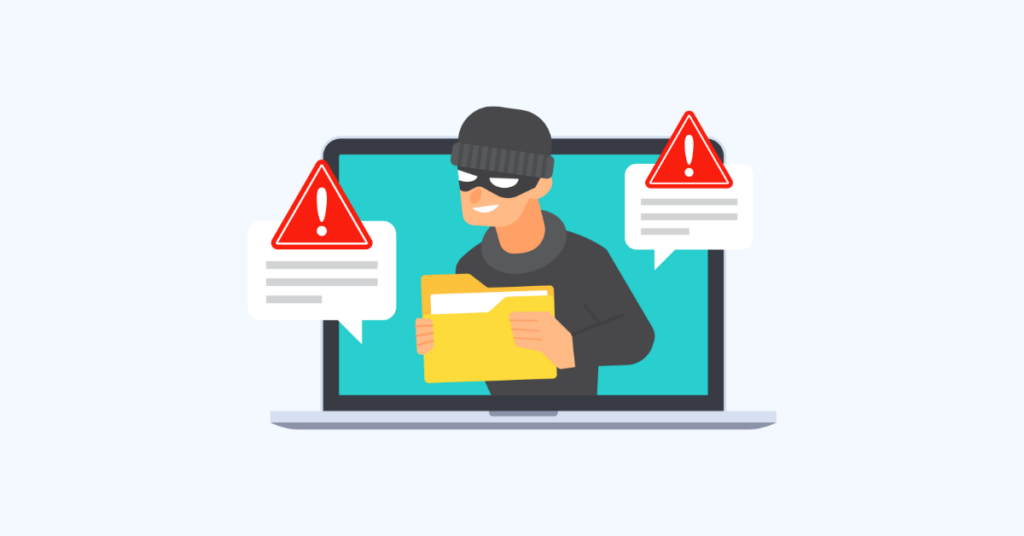As a law firm, protecting your clients’ confidential information is of the utmost importance. Unfortunately, no matter how careful you are, data breaches can happen. In fact, law firms are often targeted by cybercriminals because they hold sensitive information that can be valuable on the black market. In this article, we will discuss law firm security and how to prepare for and respond to a data breach in order to protect your clients and your firm’s reputation.
Understanding the Risks of Data Breaches
Law firms hold a wealth of sensitive information, including financial records, personal identification, and confidential legal documents. This makes them an attractive target for cybercriminals looking to steal valuable data. A data breach can result in significant financial losses, reputational damage, and legal liabilities for your firm. Therefore, it’s essential to understand the risks and take proactive measures to protect your clients’ data.
Preparing Your Law Firm for a Data Breach
Preparing for a data breach requires a comprehensive approach that involves multiple stakeholders within your firm. The following are the steps you should take to prepare your law firm for a data breach:
Image source: Cisco
Conduct a Risk Assessment
The first step is to identify the risks to your firm’s data. This can involve reviewing the types of data you store, how it’s stored, and who has access to it. Additionally, you should identify the potential threats to your data, such as phishing scams, malware attacks, or social engineering tactics. A risk assessment can help you develop a plan to mitigate these risks and prepare for a data breach.
Develop a Written Data Breach Response Plan
Once you’ve identified the risks, the next step is to develop a written data breach response plan. This plan should outline the steps your firm will take in the event of a data breach, including who will be responsible for each step. The plan should also outline the procedures for notifying affected parties, including clients and regulators. Finally, the plan should include a communication strategy to manage your firm’s reputation in the event of a breach.
Train Your Employees
Your employees are your first line of defense against a data breach. Therefore, it’s essential to train them on how to detect and prevent data breaches. This can include training on how to identify phishing scams, how to use strong passwords, and how to report suspicious activity. Additionally, you should provide regular training to ensure that employees are up-to-date on the latest threats and best practices.
Detecting a Data Breach
Early detection of a data breach is critical to minimizing the damage. The following are the steps you can take to detect a data breach:
- Monitoring Systems for Suspicious Activity
One of the most effective ways to prevent data breaches is to monitor your systems for suspicious activity. By detecting and responding to anomalies and potential threats, you can prevent breaches before they occur. Here are some practical examples of monitoring systems for suspicious activity:
Intrusion Detection Systems
Intrusion detection systems (IDS) monitor network traffic and detect potential threats such as malware, viruses, and unauthorized access attempts. IDS can be configured to generate alerts when suspicious activity is detected, allowing your IT team to investigate and respond to potential threats.
Security Information and Event Management (SIEM) Systems
SIEM systems collect and analyze log data from multiple sources, including firewalls, servers, and applications. It can also identify potential threats and generate alerts when suspicious activity is detected and provide advanced reporting and analytics capabilities to help you identify trends and patterns in your data.
Image source: Inviciti
User Behavior Analytics (UBA)
UBA tools monitor user activity and behavior to detect anomalies and potential threats. UBA can identify suspicious activity such as unauthorized access attempts, data exfiltration, and account compromise. By monitoring user behavior, UBA tools can detect threats that may be missed by other security tools.
Vulnerability Scanning
Vulnerability scanning tools scan your systems for known vulnerabilities and misconfigurations. By identifying and prioritizing vulnerabilities, you can take proactive measures to patch and remediate potential security issues before they are exploited by attackers.
- Conducting Regular Audits
Conducting regular audits is an important part of maintaining the security of your law firm’s data. Audits help you identify vulnerabilities, assess risks, and ensure that you’re complying with industry regulations and best practices. Here are some key steps to conducting regular audits:
Define Scope and Objectives
Before you begin your audit, you should define the scope and objectives. This will help you focus your efforts and ensure that you’re addressing the most critical areas. You should also identify the assets and data that will be audited, as well as any regulatory requirements or industry standards that apply.
Assess Risks and Vulnerabilities
Once you’ve defined the scope and objectives, you should assess risks and vulnerabilities. This can involve reviewing logs, analyzing access controls, and conducting vulnerability scans. The goal is to identify any weaknesses or potential threats to your data security.
Review Policies and Procedures
In addition to assessing risks and vulnerabilities, you should review your policies and procedures. This can involve reviewing your data retention policies, disaster recovery plans, and incident response plans. The goal is to ensure that your policies and procedures are up-to-date and aligned with industry best practices.
Test Controls
After you’ve assessed risks and reviewed policies and procedures, you should test controls. This can involve conducting penetration testing, social engineering tests, and other forms of testing to identify weaknesses in your security controls. The goal is to ensure that your controls are effective and functioning as intended.
Document and Report Findings
Finally, you should document and report your findings. This can involve creating a detailed report that summarizes your audit findings and identifies areas for improvement. You should also provide recommendations for remediation and establish a timeline for implementing any necessary changes.
Image source: isecuredataltd
Responding to a Data Breach
If you detect a data breach, it’s important to respond quickly and decisively. The following are the steps you should take to respond to a data breach:
- Containment and Investigation
The first step is to contain the breach and prevent further damage. This can involve shutting down affected systems, isolating affected devices, and blocking access to compromised accounts. Once you’ve contained the breach, you should conduct a thorough investigation to determine the extent of the damage and the cause of the breach.
- Notification of Affected Parties
If client data has been compromised, you have a legal and ethical obligation to notify affected parties. The notification should include details of the breach, the type of data that was compromised, and steps that the affected parties can take to protect themselves. It’s important to communicate clearly and promptly to build trust with your clients.
- Working with Law Enforcement
If the breach is severe, you should contact law enforcement. They can help you investigate the breach and track down the responsible parties. Additionally, they can provide guidance on how to prevent future breaches and ensure that you comply with any legal obligations.
- Remediation and Recovery
Once the breach has been contained and affected parties have been notified, you should focus on remediation and recovery. This can involve restoring systems, repairing any damage, and implementing new security measures to prevent future breaches. Additionally, you should review your data breach response plan and make any necessary updates based on lessons learned.
Conclusion
Data breaches can have serious consequences for law firms and their clients. By taking proactive measures to prepare for a data breach and responding quickly and decisively when a breach occurs, you can minimize the damage and protect your clients’ confidential information.
Remember to conduct a risk assessment, develop a written data breach response plan, and train your employees. Additionally, be vigilant in monitoring for suspicious activity and be prepared to respond quickly in the event of a breach.







